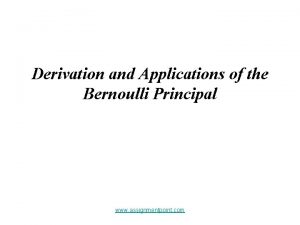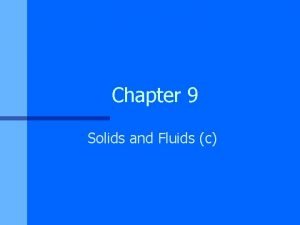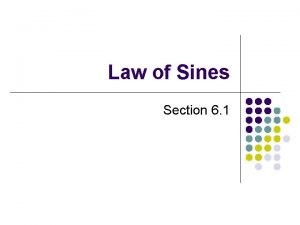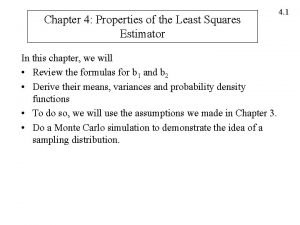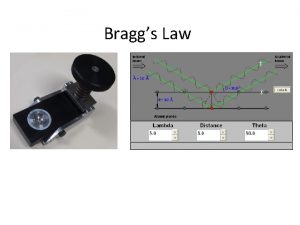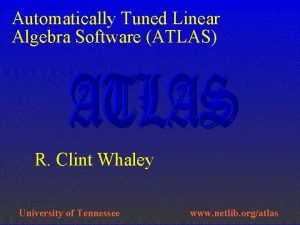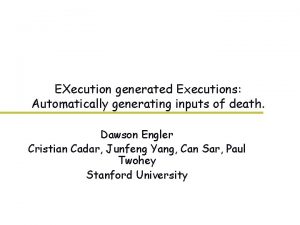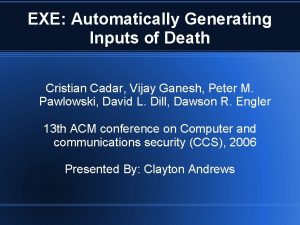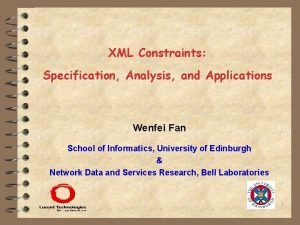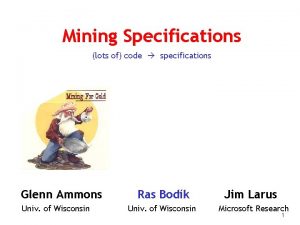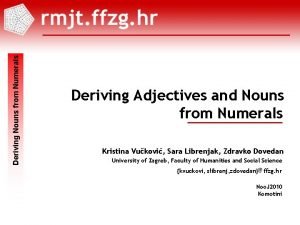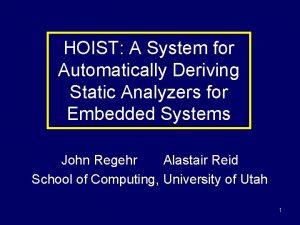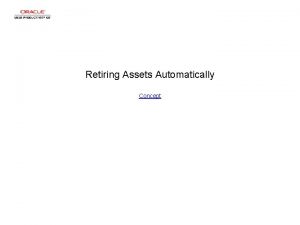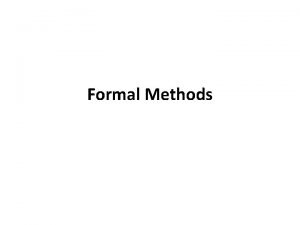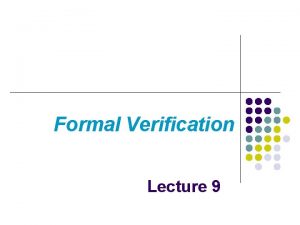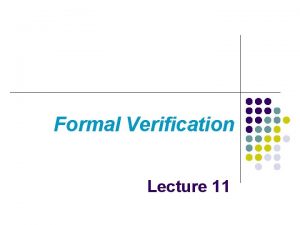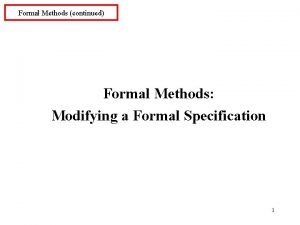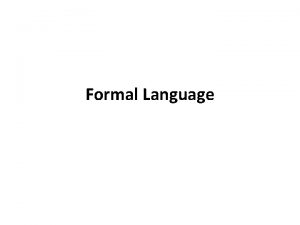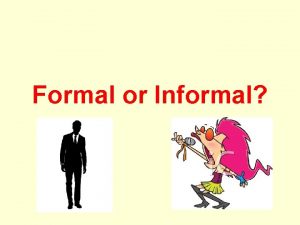Deriving formal specifications almost automatically Glenn Ammons and












- Slides: 12

Deriving formal specifications (almost) automatically Glenn Ammons and Ras Bodik and James R. Larus

Three pillars of formal verification • Model checkers and other verifiers – well automated (SLAM, Spin, type checkers, Vault) • Program abstractors – getting there (SLAM, Engler’s metacompiler) • Formal specifications – Written by hand – Our goal: bring automation to writing formal specifications

Deriving specs is feasible • Well-debugged software exists – Good code obeys the rules, but doesn’t state them clearly • Common behavior is good behavior – Because testing exposes common behavior • Programmers exist – But they don’t want to write specs!

Rules describe good behavior A rule is a nondeterministic finite automaton: S T = XNext. Event XSet. Selection. Owner(T) XGet. Selection. Owner F

Rules are derived from traces, with user guidance Xt. App. Next. Event() = event(type = 5, window = 22, time = 3: 15) Xt. Dispatch. Event(type = 5, window = 22, time = 3: 15) Xt. Free(NULL) Xt. Malloc(size = 8) = 0 x 10 Xmu. Intern. Strings(names = 0 x 20, count = 2, atoms_return = 0 x 10) Xt. Own. Selection(widget = 0 x 30, selection = 1, time = 3: 15) And so on: the more traces the better

Overview Traces Programs or traces (buggy? ) Seeds Abstraction prescription Rule learner Program abstractor Rules Matcher Bugs! Abstract programs or traces

Case study: selections in X 11 • The rule: Set. Selection. Owner must be passed a timestamp from an Xevent • 25 programs from the X 11 distribution and the contrib directories (all used selections) • Verification done over traces (not statically) • Found two bugs in 29 static uses • Found three benign violations

To do • • Static checking: typestates Better simplifier Better user interaction What else can we learn? – Protocols like socket/bind/accept/close – Operations on data structures

Power What else can we do with this stuff? Compare with Ernst

Detailed figure?

Running example

Testing vs. verification • Examines the complete • Examines only some aspects of programs • Examines some inputs • Examines all inputs • For better coverage, write more specs write more test cases The practice sees writing test cases as easier than writing formal models and specifications, so testing dominates.
 Bernoulli's law
Bernoulli's law Bernoulli equation derivation
Bernoulli equation derivation Range equation derivation
Range equation derivation Deriving law of sines
Deriving law of sines Properties of least squares estimators
Properties of least squares estimators Deriving bragg's law
Deriving bragg's law Listening for deriving aesthetic pleasure ?
Listening for deriving aesthetic pleasure ? Maxwell thermodynamic relations
Maxwell thermodynamic relations Clint whaley
Clint whaley Exe: automatically generating inputs of death
Exe: automatically generating inputs of death Exe: automatically generating inputs of death
Exe: automatically generating inputs of death Xml constraints
Xml constraints Write the difference between ideal and practical op-amp.
Write the difference between ideal and practical op-amp.
